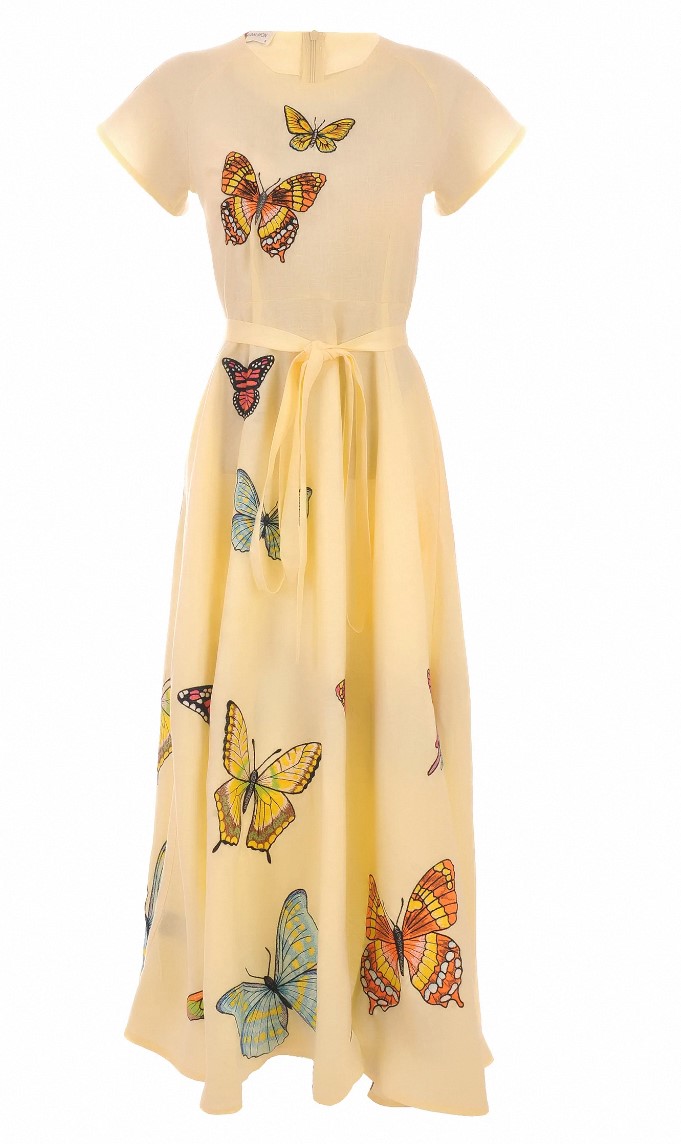The ’60s marked a significant era in the fashion world, with butterfly dresses emerging as a popular trend that continues to captivate us today. These iconic dresses have a rich history, evolving in style and design over the years. In this blog post, we will explore the fascinating journey of butterfly dresses from the ’60s to the present day.

The Swinging ’60s: Birth of the Butterfly Dress
The ’60s was a period of revolution and change, and fashion played a vital role in expressing this newfound freedom. Butterfly dresses became popular during this time, reflecting the era’s bohemian spirit and love for nature-inspired motifs. These dresses featured vibrant colors, bold butterfly prints, and flowy silhouettes that embraced the era’s carefree and youthful vibe. The butterfly symbolized liberation and transformation, making it the perfect choice for a generation seeking to break free from conventional norms. Celebrities like Twiggy and Audrey Hepburn were often seen donning these whimsical dresses, solidifying their popularity.
The ’70s and ’80s: Retro Revival
As the ’60s came to a close, butterfly dresses experienced a decline in popularity. However, fashion is cyclical, and the ’70s and ’80s witnessed a revival of retro styles, including the butterfly dress. This time around, designers incorporated the butterfly motif in more subtle and sophisticated ways. Dresses featured delicate butterfly embroidery, appliques, or even butterfly-shaped cutouts. The bohemian influence remained strong, with flowing maxi dresses and bell sleeves taking center stage. The bright and bold colors of the ’60s gave way to earthy tones and pastels, reflecting the era’s relaxed and romantic aesthetic.
The ’90s and Early 2000s: Minimalism and Modernization
The ’90s brought a shift in fashion towards minimalism and sleek designs. Butterfly dresses adapted to these changing trends, offering a more streamlined and refined look. The emphasis shifted from bold prints to subtle details and elegant silhouettes. Dresses often featured butterfly-inspired draping, asymmetrical necklines, or fluttery sleeves that mimicked the delicate wings of a butterfly. Fabrics became lighter, with sheer overlays and chiffon gaining popularity. The color palette also became more subdued, with soft neutrals and pastels dominating the scene. Celebrities like Kate Moss and Gwyneth Paltrow embraced this minimalist approach to butterfly dresses, cementing their appeal.
Modern Times: Endless Variations
In recent years, butterfly dresses have continued to evolve, adapting to the ever-changing fashion landscape. Designers now experiment with different lengths, cuts, and fabrics to offer a wide range of butterfly-inspired dresses. Strapless, off-shoulder, and halter necklines have become popular choices, highlighting the beauty of the shoulders and neck. High-low hems, wrap styles, and ruffled details add a contemporary twist to these dresses. Fabrics vary from lightweight cotton for casual summer dresses to luxurious satin and silk for formal occasions. The color palette has expanded to include vibrant shades, metallic finishes, and even monochromatic butterfly patterns. With their versatility, butterfly dresses can be worn for a casual day out, a romantic date, or a formal event, making them a staple in modern fashion.
In conclusion, butterfly dresses have come a long way since their inception in the ’60s. From their bohemian origins to their modern variations, these dresses continue to enchant us with their whimsical charm. The ’60s embraced bold prints and vibrant colors, while the ’70s and ’80s saw a more subtle revival of the butterfly motif. The ’90s and early 2000s brought minimalism and refinement to butterfly dresses, while modern times offer endless variations to suit every style and occasion. Through the years, butterfly dresses have remained a symbol of freedom, transformation, and the enduring beauty of nature.